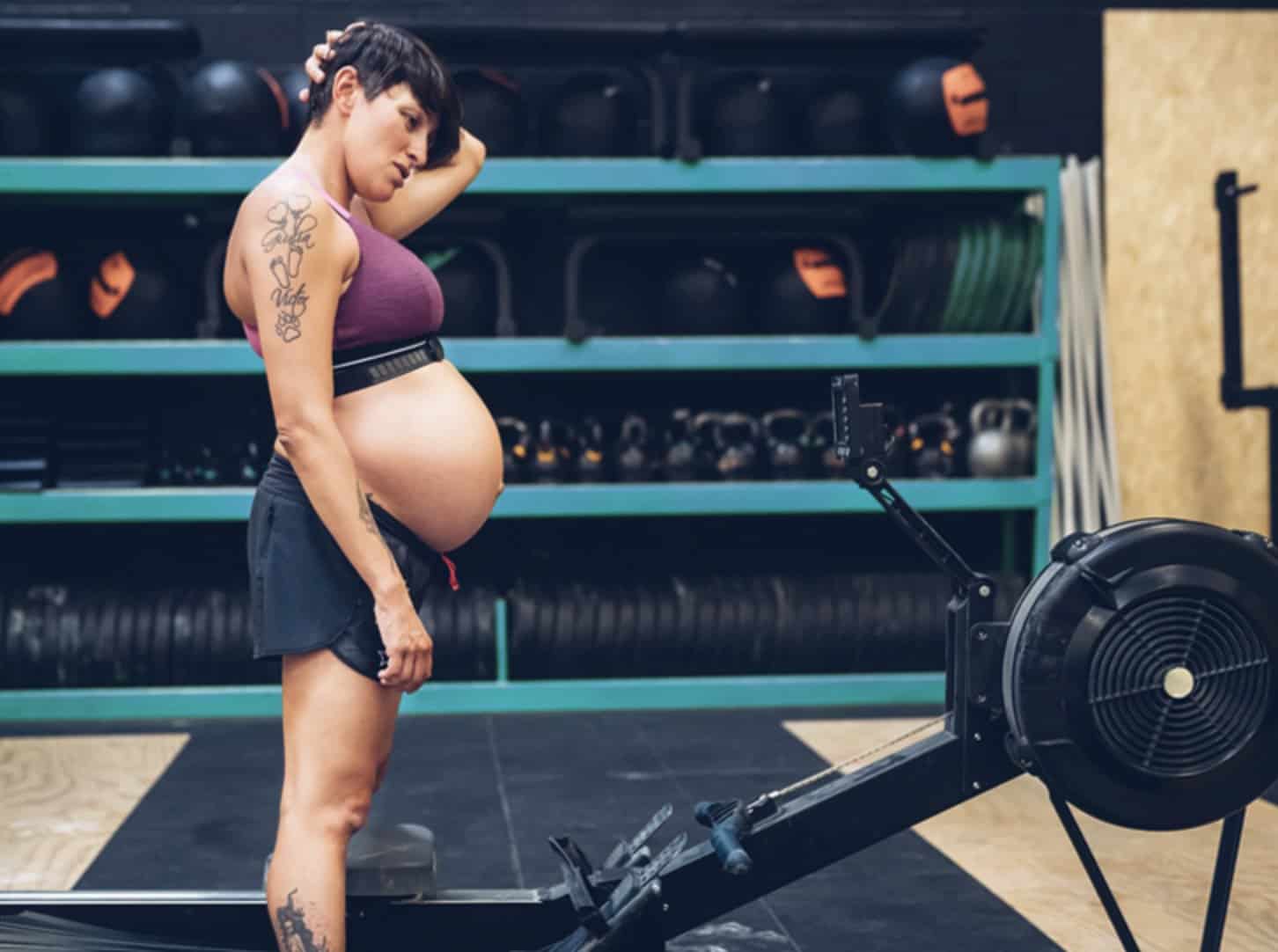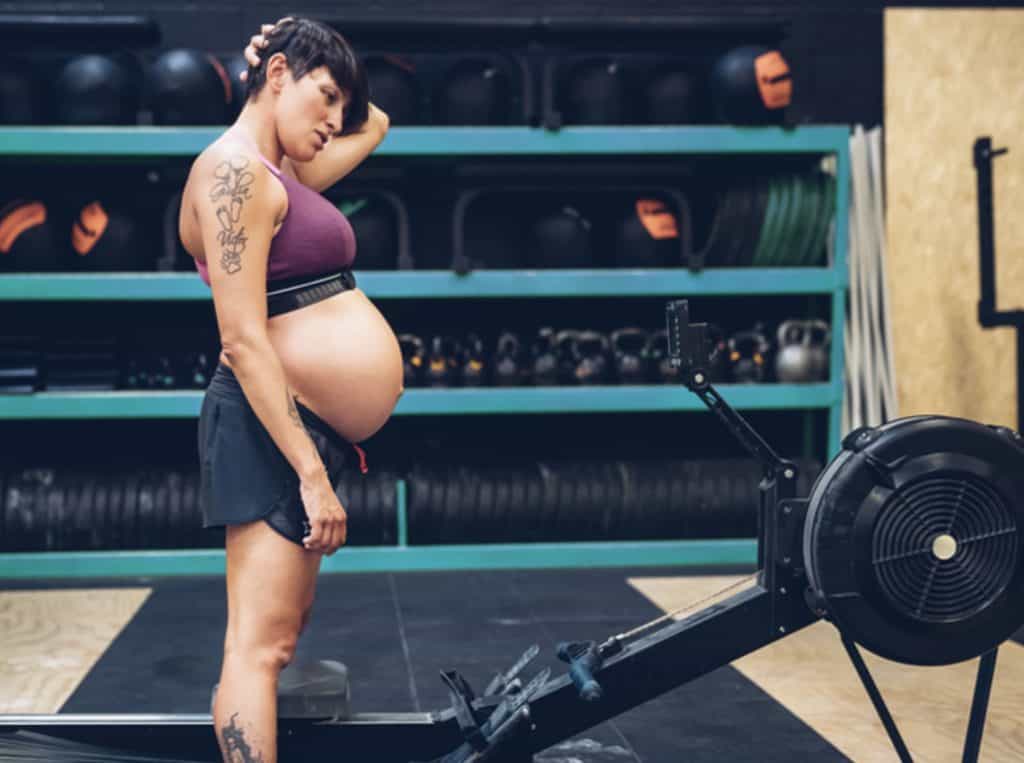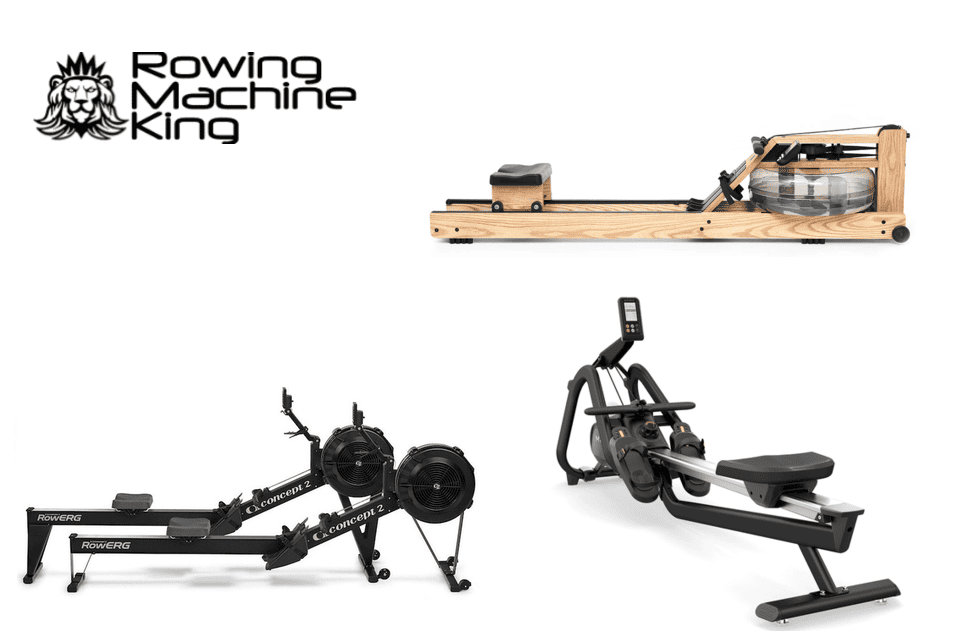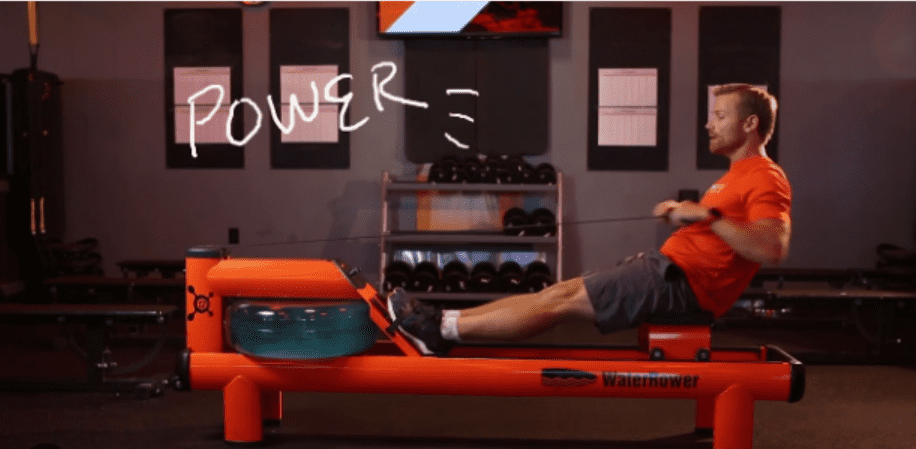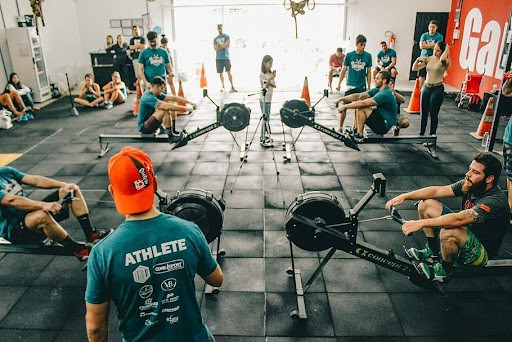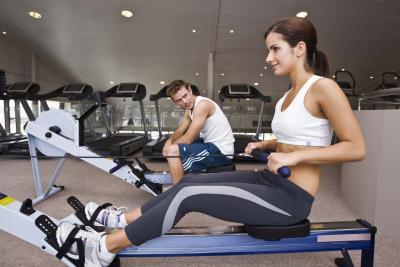Being pregnant is already life-altering, but now you need to find alternative cardio exercises too?! Before pregnancy, rowing was your go-to, now you wonder – can I use a rowing machine while pregnant?
Whether this is your first pregnancy, second, or your fifth, safety is of utmost importance to you and your baby.
You want to be safe but you also don’t want to cut out anything else from your life if you don’t need to!
Below you’ll find the answers you’ve been searching for in regards to using a rowing machine during pregnancy.
We’ll explore how to use a rowing machine, some things to be cautious about, and the benefits! Plus, we even outline some great workout routines you can follow!
Can you use a rowing machine while pregnant?
Yes! Rowing is one of the best cardio exercises you can do while pregnant. It’s a zero to low impact activity and there is minimal strain put on your back or your baby.
You can safely use a rowing machine from the day you find out you’re pregnant, all the way through your third trimester. As your baby belly grows you will have to alter your rowing form a tad, but rowing during pregnancy is doable!
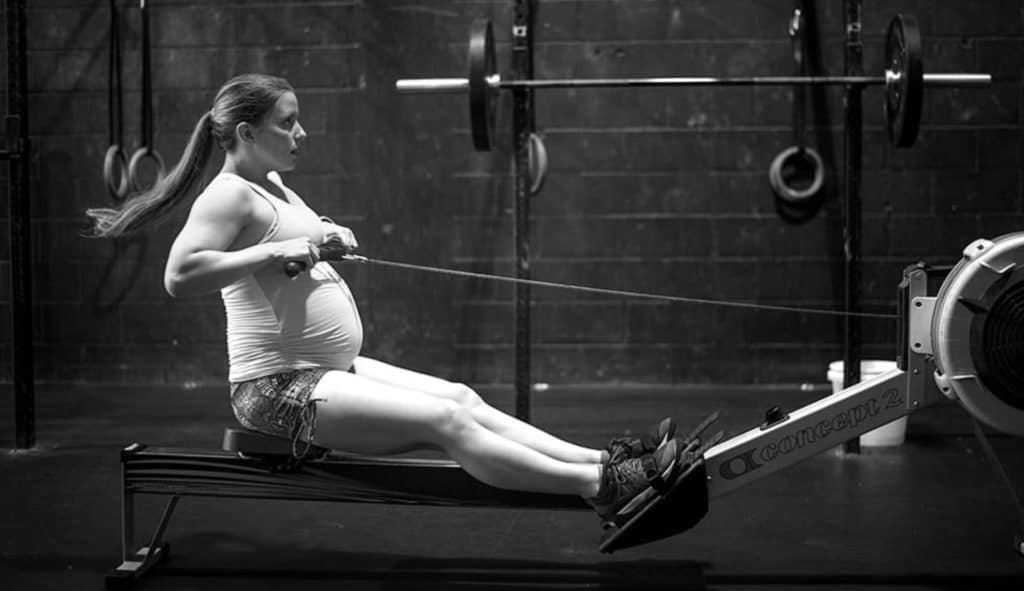
A few things to be cautious about are:
- Preventing your core body temperature from overheating
- Use air conditioning and fans
- Take breaks as much as needed
- Listen to your body (and your baby!)
- Morning sickness and rowing don’t always make a perfect sandwich
- For some pregnant rowers, rowing helped with nausea
- For other pregnant rowers, rowing made their symptoms worse
- Worst case scenario, stick with exercises with less jerky movements
Before hopping on that rowing machine, we strongly recommend speaking to your doctor first. Pregnancy is different for every woman, and if you are part of the high-risk pregnancy group, then there is all the more reason to check with your doctor first.
If your doctor already gave you a thumbs up for using a rowing machine during pregnancy, then sweet! Let’s move on to how to use a rowing machine while pregnant.
How to Use a Rowing Machine While Pregnant
It’s not as easy as before. Now, there is this lovely ball of joy resting in front of you.
You worry about hitting your stomach with the handlebar in the finish position. Again you wonder, is a rowing machine safe for pregnancy? With the proper rowing technique and a few adjustments, you can put your worries aside.
Here are 3 steps for keeping a safe and proper form when rowing during pregnancy:
Step 1 – Strap your feet in at a lower position
Pregnant women should strap their feet in at a lower position to get more reach in their row. If your feet are placed too high, then your stroke length and range of motion will be limited. Check out my post on proper rowing machine foot position for a better understanding.
Your balance is already off when you are pregnant, so make sure your feet and foot straps are secured firmly before you start rowing. No surprises!
Step 2 – Separate your legs farther out to the sides
For the most obvious reasons, if you keep your legs and knees straight forward, you won’t get much range of motion. Keeping your legs and knees straight isn’t very comfortable either with that baby growing inside.

Separating your legs to the sides feels more comfortable and natural when you are pregnant. This form will also give you more space for your baby belly.
Step 3 – Pull the handlebar towards the middle to the upper chest
Do you remember that worry you were having about hitting your belly while rowing? Step three is important and will help you avoid hitting your baby-belly.
Normally, you want to pull the handlebar just above your midsection, but when you are pregnant that’s unsafe and awkward. Instead, pull the handlebars towards your middle or upper chest to keep you and your baby belly safe.
Check out this video for a few more tips and tricks:
Rowing Machine Workouts to do During Pregnancy
It is much easier to stick to a rowing routine when there is a simple and easy-to-follow workout plan.
The next time you head to the gym, use one of our simple charts provided below based on your fitness level.
Beginner Fitness Level
Pregnant women in the beginner fitness level are new to the rowing machine, never exercise, or inconsistently exercised before pregnancy. In the beginner level, aim to row three days per week starting at 10-minute timeframes.
If your body is not able to endure three days per week, lessen the amount of time you exercise and slowly build up your time as your body adjusts. Listen to your body and your baby and adjust accordingly.
Your resistance level should stay at a low resistance, which is a level 3 through 5 on an air rower. For water rowers, if you exercise at the gym or from home, row slower for decreased resistance.
If you are feeling strong and your body is ready to take on more, then you can increase your resistance level. To learn more about the different rowing machine resistance types, check out our article here.
|
Week 1 |
Week 2 |
Week 3 |
Week 4 | |
|
Monday |
10-min warmup 10-min rowing 5-min cool-down |
10-min warmup 10-min rowing 5-min cool-down |
10-min warmup 10-min rowing 5-min cool-down |
10-min warmup 15-min rowing 5-min cool-down |
|
Tuesday |
Rest |
Rest |
Rest |
10-min warmup 15-min rowing 5-min cool-down |
|
Wednesday |
10-min warmup 10-min rowing 5-min cool-down |
10-min warmup 10-min rowing 5-min cool-down |
10-min warmup 15-min rowing 5-min cool-down |
Rest |
|
Thursday |
Rest |
Rest |
Rest |
10-min warmup 15-min rowing 5-min cool-down |
|
Friday |
10-min warmup 10-min rowing 5-min cool-down |
10-min warmup 10-min rowing 5-min cool-down |
10-min warmup 15-min rowing 5-min cool-down |
10-min warmup 20-min rowing 5-min cool-down |
|
Saturday |
Rest |
Rest |
Rest |
Rest |
|
Sunday |
Rest |
Rest |
Rest |
Rest |
Intermediate Fitness Level
Pregnant women at the intermediate fitness level are women who exercised consistently before getting pregnant but may not be as attuned to rowing machines as the advanced group. In the intermediate level, aim to row three to four times per week starting at 15-minute timeframes.
Your resistance level should be a medium resistance, which is a level 5 through 7 on an air rower. When you are ready, go ahead and increase the resistance level. For water rowers, row faster for increased resistance.
|
Week 1 |
Week 2 |
Week 3 |
Week 4 | |
|
Monday |
10-min warmup 15-min rowing 5-min cool-down |
10-min warmup 15-min rowing 5-min cool-down |
10-min warmup 20-min rowing 5-min cool-down |
10-min warmup 25-min rowing 5-min cool-down |
|
Tuesday |
10-min warmup 15-min rowing 5-min cool-down |
10-min warmup 20-min rowing 5-min cool-down |
10-min warmup 20-min rowing 5-min cool-down |
10-min warmup 25-min rowing 5-min cool-down |
|
Wednesday |
Rest |
Rest |
Rest |
Rest |
|
Thursday |
10-min warmup 15-min rowing 5-min cool-down |
10-min warmup 20-min rowing 5-min cool-down |
10-min warmup 20-min rowing 5-min cool-down |
10-min warmup 25-min rowing 5-min cool-down |
|
Friday |
10-min warmup 15-min rowing 5-min cool-down |
10-min warmup 20-min rowing 5-min cool-down |
10-min warmup 25-min rowing 5-min cool-down |
10-min warmup 25-min rowing 5-min cool-down |
|
Saturday |
Rest |
Rest |
10-min warmup 25-min rowing 5-min cool-down |
10-min warmup 30-min rowing 5-min cool-down |
|
Sunday |
Rest |
Rest |
Rest |
Rest |
Advanced Fitness Level
Pregnant women at the advanced fitness level are the ones that have been rowing steadily before pregnancy. In the advanced level, you should be able to row at least five times per week if not more. Start your rowing workouts at 20-minutes.
Before pregnancy, you may have been rowing for a much longer period. The amount of time rowing is dropped down to 20 to 30 minutes, to prevent the baby from overheating.
An advanced resistance level can stay at the medium resistance, level 5 through 7, or increased to heavy resistance, which is level 8 through 10 on an air rower. For water rowers, row faster for increased resistance.
|
Week 1 |
Week 2 |
Week 3 |
Week 4 | |
|
Monday |
10-min warmup 20-min rowing 5-min cool-down |
10-min warmup 25-min rowing 5-min cool-down |
10-min warmup 30-min rowing 5-min cool-down |
10-min warmup 30-min rowing 5-min cool-down |
|
Tuesday |
10-min warmup 20-min rowing 5-min cool-down |
10-min warmup 25-min rowing 5-min cool-down |
10-min warmup 30-min rowing 5-min cool-down |
10-min warmup 25-min rowing 5-min cool-down |
|
Wednesday |
Rest |
Rest |
Rest |
Rest |
|
Thursday |
10-min warmup 20-min rowing 5-min cool-down |
10-min warmup 25-min rowing 5-min cool-down |
10-min warmup 30-min rowing 5-min cool-down |
10-min warmup 30-min rowing 5-min cool-down |
|
Friday |
10-min warmup 20-min rowing 5-min cool-down |
10-min warmup 25-min rowing 5-min cool-down |
10-min warmup 25-min rowing 5-min cool-down |
10-min warmup 30-min rowing 5-min cool-down |
|
Saturday |
10-min warmup 25-min rowing 5-min cool-down |
10-min warmup 30-min rowing 5-min cool-down |
10-min warmup 30-min rowing 5-min cool-down |
10-min warmup 30-min rowing 5-min cool-down |
|
Sunday |
Rest |
Rest |
10-min warmup 25-min rowing 5-min cool-down |
10-min warmup 30-min rowing 5-min cool-down |
What do the Experts Say?
According to the MayoClinic, pregnant women should aim for 30 minutes of moderate-intensity exercise. Lucky for you, rowing falls under moderate intensity.
Health experts say pregnant women should exercise based on their fitness level. If you never worked out a day in your life before pregnancy, then it is not smart to jump on a rower and row like a mad man for hours.
You will need to ease into rowing, starting with 10 minutes each day with stretching. After that, you can slowly add in 5-minute increments until you reach 30 minutes each day.

If you were a beast (aka advanced level) on the rowing machine before pregnancy, then you can exercise at the same level on a row machine while pregnant. Again, you should get your doctor’s approval and always listen to your body.
Exercising every day is super healthy while you are pregnant. If every day rowing is too much for you, then three to four days per week is a perfectly fine aim as well.
No matter what fitness you are at now, always do a 10-minute warm-up before you start rowing. Do some light stretching to warm your muscles up and get the baby ready for rowing.
Benefits of Using a Rowing Machine During Pregnancy
As a bonus, we decided to give you a quick list of the benefits of using a row machine during pregnancy. Using a rowing machine:
- Offers zero to low-impact
- Requires no bouncing
- Stabilizes and boosts your mood
- Reduces pregnancy discomforts like swelling and constipation
- Relieves pressure in the hips
- Decreases fatigue and insomnia
- Builds a stronger core to prevent back pain
- Works your full body to help with stability and balance
So, it is clear to say using a row machine is safe for pregnancy. Rowing is also great for postpartum!
In Summary
So, can you use rowing machines while pregnant? And is a rowing machine safe for pregnancy? Yes and yes.
Remember to consult your doctor first, and listen to your body and your baby belly. With three rowing machine fitness levels to choose from, you are on your way to being one fit mama!
If you are interested in buying a rower, make sure the check out the best models available! Also, feel free to leave any tips, tricks, comments, or questions below!

